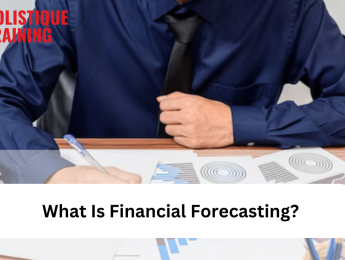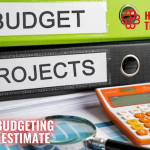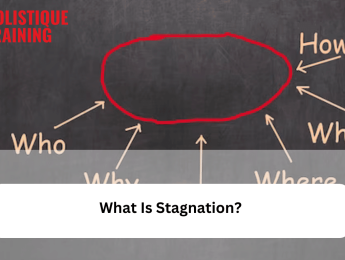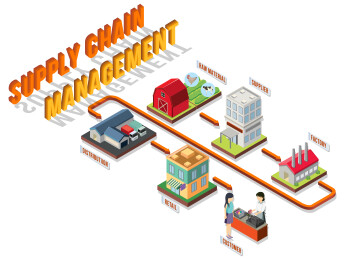- Table of Contents
- Introduction
- What Is Financial Forecasting?
- Importance of Financial Forecasting
- Strategic Planning
- Budgeting and Resource Allocation
- Capital Investment Decisions
- Risk Management
- Performance Evaluation
- What Are the 5 Financial Forecasting Methods?
- 1. Time Series Analysis
- 2. Regression Analysis
- 3. Qualitative Methods
- 4. Scenario Analysis
- 5. Monte Carlo Simulation
- Crucial Financial Forecasting Tools
- Spreadsheet Software
- Financial Planning and Analysis (FP&A) Software
- Business Intelligence (BI) Tools
- Artificial Intelligence (AI) and Machine Learning (ML)
- Forecasting Software Suites
- The Ethical Dilemmas of AI in Financial Forecasting
- Autonomy and Decision-Making
- Bias and Fairness
- Transparency and Accountability
- Privacy and Data Security
- Job Displacement and Economic Impact
- Dual-Use Dilemmas
- Environmental Impact
- Informed Consent and User Awareness
- Conclusion
Introduction
Financial forecasting is an indispensable process that empowers businesses and individuals to anticipate future financial performance based on historical data and economic trends. It serves as a critical decision-making tool, helping businesses plan and allocate resources effectively, identify potential financial risks, and seize opportunities for growth. In this blog post, we will explore the concept of financial forecasting, highlight its importance, delve into the four essential financial forecasting methods, and introduce some crucial tools that facilitate accurate and efficient forecasting.
What Is Financial Forecasting?
Financial forecasting, the cornerstone of strategic decision-making, is a nuanced art and a precise science that provides organisations with a window into their financial future. It's akin to a weather forecast, but for the financial world, predicting not rain or sunshine, but revenue streams, expenses, and profitability. By analysing historical data, market trends, and a myriad of other economic variables, financial forecasting allows businesses to create a roadmap for the future. This roadmap isn’t just a prediction; it’s a meticulously calculated strategy, outlining where a company is headed and how it plans to get there.
In essence, financial forecasting serves as a compass guiding businesses through turbulent financial waters. In a global economy characterised by rapid changes, understanding the subtleties of financial forecasting is akin to possessing a secret weapon. It enables companies to preemptively adapt to market fluctuations, make agile decisions, and seize opportunities as they arise. Furthermore, financial forecasting isn’t merely about numbers; it's about vision and adaptability. A robust financial forecast not only predicts outcomes but also equips businesses with the foresight to innovate and stay ahead of the competition. In today’s fast-paced business landscape, where adaptability is key, financial forecasting isn’t just a tool; it’s a strategic imperative that shapes the very foundation of successful enterprises, ensuring they not only survive but thrive amidst challenges and uncertainties.
Importance of Financial Forecasting
Understanding the significance of financial forecasting is essential before delving into the various techniques and tools that empower businesses and individuals to make informed decisions about their financial future. Here’s why financial forecasting is vital:
Strategic Planning
Financial forecasting acts as the cornerstone of strategic planning for businesses. Imagine a ship embarking on a voyage without a map; it might drift aimlessly. Similarly, businesses without financial forecasts lack direction. By predicting future financial outcomes, organisations can chart their course effectively. They can set realistic and achievable goals, formulate long-term strategies, and align resources with precision. Whether it's expanding into new markets, launching innovative products, or diversifying their portfolios, strategic planning rooted in accurate financial forecasts empowers businesses to make decisions with confidence.
Budgeting and Resource Allocation
In the realm of finance, resources are finite and precious. Efficient allocation is paramount, and this is where financial forecasting shines brightly. With accurate predictions, businesses can develop budgets that reflect their financial reality. This ensures that resources are distributed optimally across departments and projects. When every penny is allocated purposefully, overspending is curtailed, and potential areas for cost-saving measures become apparent. From manpower to marketing, from research to development, financial forecasting illuminates the path, allowing businesses to invest where it matters most and curbing unnecessary expenditures.
Capital Investment Decisions
For businesses seeking external investments or planning significant capital ventures, financial forecasts are their allies in the boardroom. Investors and stakeholders scrutinise these forecasts meticulously to assess the feasibility and potential returns of proposed projects. Through financial forecasting, businesses can present a compelling case, backed by data, to secure funding. Furthermore, it aids in internal capital allocation decisions. Should the company invest in research and development or expand its production facilities? Is it the right time to acquire a competitor? Financial forecasts offer clarity, allowing businesses to make investments that align with their growth objectives and financial capacity.
Risk Management
In the unpredictable terrain of finance, uncertainties and risks are omnipresent. Financial forecasting acts as a shield, helping businesses identify potential pitfalls before they become insurmountable challenges. By understanding the potential financial risks and uncertainties, organisations can develop robust contingency plans. These plans act as safety nets, ensuring that when unforeseen circumstances arise—be it economic downturns, sudden market shifts, or geopolitical crises—businesses are prepared. This proactive approach, born out of financial forecasting, not only mitigates potential losses but also bolsters the organisation’s resilience, enabling it to weather storms and emerge stronger.
Performance Evaluation
The journey of a business is marked by milestones and hurdles. Financial forecasting provides a unique tool for evaluation, akin to a mirror reflecting the organisation’s performance. By regularly comparing actual financial results with forecasted figures, businesses can gain profound insights. Successes are celebrated, and strategies behind these victories are dissected for replication. Simultaneously, areas that fall short of expectations are identified. These discrepancies become opportunities for introspection and improvement. Businesses can then tweak their strategies, optimise their operations, and enhance their performance, ensuring that they are always on the path to achieving their financial goals.
In essence, financial forecasting is not just a predictive tool; it’s the cornerstone upon which sound financial strategies are built. It empowers businesses to be proactive rather than reactive, strategic rather than impulsive. In a world where financial landscapes can change swiftly, the foresight provided by accurate financial forecasts becomes an invaluable asset, guiding businesses toward sustainable growth and enduring success.
What Are the 5 Financial Forecasting Methods?
To equip ourselves with the knowledge needed to make accurate financial predictions, let's explore the four fundamental financial forecasting methods that professionals use to analyse past data and project future trends:
1. Time Series Analysis
Time Series Analysis serves as the bedrock of financial forecasting. It delves into historical data, unveiling hidden patterns and trends. Imagine it as a seasoned historian, meticulously studying past events to predict the future. Statistical tools are employed to identify recurrent patterns such as seasonality, cyclical trends, and irregular fluctuations. These patterns become the building blocks of forecasts, assuming that history tends to repeat itself. For instance, in retail, time series analysis can help predict sales patterns during specific seasons, aiding in inventory management and marketing strategies.
2. Regression Analysis
Regression Analysis steps into the realm of cause and effect. It explores the relationships between variables, deciphering how changes in one variable impact another. Think of it as a detective, deducing the reasons behind specific outcomes. In financial forecasting, it’s invaluable when analysing marketing spend against sales revenue. By understanding this relationship, businesses can make precise predictions. If a 10% increase in marketing expenditure historically leads to a 15% rise in sales, businesses can forecast revenue based on planned marketing budgets, ensuring targeted investments.
3. Qualitative Methods
In the unpredictable world of finance, not all variables can be quantified. This is where Qualitative Methods come into play, relying on expert judgement, opinions, and subjective data. These methods are akin to seasoned storytellers, weaving narratives from snippets of information. When historical data is scarce or when dealing with market trends influenced by intangible factors such as consumer sentiments or political events, qualitative methods offer invaluable insights. For instance, when launching a new product, expert opinions about its potential market reception can guide initial sales forecasts until concrete data becomes available.
4. Scenario Analysis
Scenario Analysis is the master of what-ifs. It constructs multiple scenarios based on different assumptions, allowing businesses to prepare for a spectrum of outcomes. Think of it as a strategist, mapping out various battle plans for different terrains. This method becomes indispensable in highly uncertain environments or when external factors wield significant influence. For instance, in the energy sector, scenario analysis can help companies plan for different oil price scenarios, allowing them to adjust their strategies based on changing market dynamics.
5. Monte Carlo Simulation
Monte Carlo Simulation stands at the intersection of mathematics, probability, and computer science. It’s a method that explores a myriad of possible outcomes by introducing randomness into mathematical models. Imagine it as a thousand virtual experiments, each exploring a different path of possibilities. In financial forecasting, especially when dealing with complex systems, Monte Carlo Simulation shines. It’s like exploring a maze with multiple exits, each exit representing a potential financial outcome. By running thousands of simulations, it provides a probability distribution, offering insights into the range of possible results. This method is particularly valuable when dealing with intricate financial models, such as options pricing or project risk analysis.
Monte Carlo Simulation doesn’t just predict a single future; it offers a panorama of potential futures, each with its probability. For instance, in project management, it can help estimate project completion times. By considering various uncertainties like task duration and resource availability, Monte Carlo Simulation provides a range of completion times, aiding project managers in setting realistic expectations and devising contingency plans.
Crucial Financial Forecasting Tools
As we embark on our journey to unravel the world of financial forecasting, it is essential to acquaint ourselves with the indispensable tools that serve as a compass, guiding finance professionals through the complex terrain of data analysis and prediction. Let's now delve into some of these crucial financial forecasting tools that elevate accuracy and streamline the forecasting process:
Spreadsheet Software
Spreadsheet software like Microsoft Excel or Google Sheets is widely used for financial forecasting. These tools offer robust functionality for data analysis, modelling, and creating complex financial projections. With easy-to-use interfaces, they allow users to build various financial models, apply formulas, and visualise data with graphs and charts.
Feature | Microsoft Excel | Google Sheets |
Data Analysis | Yes | Yes |
Collaboration | Limited | Real-time collaboration |
Visualisation | Advanced charts and graphs | Basic charts |
Accessibility | Desktop application | Cloud-based |
Financial Planning and Analysis (FP&A) Software
FP&A software is designed specifically for financial forecasting and planning. These tools automate data consolidation, streamline financial analysis, and provide comprehensive insights into business performance. With built-in collaboration features, they facilitate seamless teamwork among finance professionals.
Business Intelligence (BI) Tools
BI tools like Tableau,Power BI, and QlikView help businesses transform raw data into actionable insights. They offer interactive dashboards and data visualisation capabilities, making it easier to interpret financial data and identify trends and patterns.
Artificial Intelligence (AI) and Machine Learning (ML)
AI and ML technologies have revolutionised financial forecasting by offering advanced predictive capabilities. These tools can analyse vast amounts of data, identify patterns, and make accurate predictions, thereby enhancing the accuracy and efficiency of financial forecasts. In fact, according to Norman Po’s article onLinkedIn, by integrating automatic machine learning-based forecasting, a significant amount of time is saved - often from weeks to hours. This, in Po’s opinion, allows financial analysts to better focus their effort towards managing and planning assets, cash flow and inventory.
Forecasting Software Suites
Comprehensive forecasting software suites, such as Adaptive Insights, Anaplan, and Oracle Hyperion Planning, integrate various financial forecasting functionalities into a single platform. These suites typically include budgeting, planning, and performance management tools, making them ideal for large enterprises and complex forecasting scenarios.
The Ethical Dilemmas of AI in Financial Forecasting
As artificial intelligence (AI) infiltrates the realm of financial forecasting, it brings with it not just promises of efficiency but a host of ethical dilemmas that demand careful consideration. Here, we delve into the intricate web of these dilemmas, examining their nuances and implications in the context of financial forecasting.
Autonomy and Decision-Making
One of the central ethical dilemmas revolves around the degree of autonomy granted to AI algorithms. How much decision-making power should be vested in machines, especially in critical financial decisions? Striking a balance between human expertise and machine precision is crucial. While AI can process vast datasets and identify patterns, human judgement is necessary to interpret these findings contextually. Financial forecasters must grapple with questions about the extent to which they rely on AI suggestions and when human intervention becomes essential.
Bias and Fairness
AI systems learn from historical data, inheriting the biases present in the data they are trained on. In financial forecasting, biases can lead to skewed predictions, impacting investment decisions and market strategies. For instance, if historical data exhibits biases against certain demographics, AI algorithms might perpetuate these biases in their forecasts. Addressing these biases requires meticulous data cleansing and continuous monitoring, urging forecasters to be vigilant guardians against discrimination and unfairness.
Transparency and Accountability
AI algorithms, particularly complex neural networks, often operate as “black boxes,” making it challenging to understand how they arrive at specific predictions. This lack of transparency raises ethical concerns. Stakeholders, including investors and regulators, demand accountability. Financial forecasters face the challenge of balancing the need for transparency with the complexity of AI algorithms. Ensuring that these algorithms are interpretable and can be audited is vital for maintaining trust and ethical standards.
Privacy and Data Security
AI in financial forecasting relies on vast amounts of data, often including sensitive financial and personal information. Protecting this data is paramount, raising concerns about privacy and security. How this data is collected, stored, and utilised raises ethical questions. Financial forecasters must navigate the legal and ethical landscape of data privacy regulations, ensuring that they not only comply with laws but also respect the privacy rights of individuals whose data fuels their AI systems.
Job Displacement and Economic Impact
The advent of AI in financial forecasting, while promising efficiency, raises concerns about job displacement. Automation of tasks previously performed by humans might lead to job loss in certain sectors. Forecasters need to grapple with the ethical implications of innovation. How can society ensure that technological advancement benefits everyone and doesn’t exacerbate existing economic inequalities? Addressing these ethical concerns requires proactive measures such as retraining programmes and policies that foster economic inclusivity.
Dual-Use Dilemmas
AI developed for financial forecasting might find applications in areas beyond finance, including military or surveillance systems. This raises the dual-use dilemma: technology intended for positive purposes being repurposed for potentially harmful applications. Financial forecasters, along with AI developers, must be vigilant about the potential misuse of their innovations, advocating for ethical guidelines and responsible use of AI technologies.
Environmental Impact
AI systems, particularly deep learning models, require substantial computational power. This demand contributes to significant energy consumption, raising concerns about the environmental impact. Ethical forecasters consider not only the economic but also the ecological cost of AI. Exploring energy-efficient algorithms and sustainable computing practices becomes essential, aligning technological progress with environmental responsibility.
Informed Consent and User Awareness
Users of AI-powered financial forecasting tools, whether individuals or businesses, must be informed about the capabilities and limitations of these technologies. Informed consent becomes an ethical imperative. Forecasters bear the responsibility of educating users, ensuring they comprehend the implications of AI-driven decisions. Transparent communication fosters trust and empowers users to make informed choices, aligning technological advancement with ethical principles.
Conclusion
Financial forecasting is a fundamental aspect of strategic planning and decision-making for businesses and individuals alike. By projecting future financial performance, organisations can set realistic goals, allocate resources efficiently, and identify potential risks and opportunities. The four main financial forecasting methods, namely time series analysis, regression analysis, qualitative methods, and scenario analysis, offer diverse approaches to anticipate future trends and outcomes.
Moreover, a range of crucial financial forecasting tools, including spreadsheet software, FP&A software, BI tools, and AI/ML technologies, empower finance professionals to conduct accurate and efficient forecasts. These tools not only enhance data analysis but also enable better collaboration and data visualisation.
Mastering financial forecasting techniques and leveraging crucial tools can be a game-changer for businesses and individuals seeking financial success. If you're a non-financial professional looking to enhance your financial acumen and forecasting skills, we’ve got just the right course for you. Our ’Accounting and Finance for Non-Financial Professionals’ course helps you gain the knowledge and confidence to navigate the financial landscape and make sound decisions for your organisation's prosperous future. So, make sure you contact us today for more information!

























